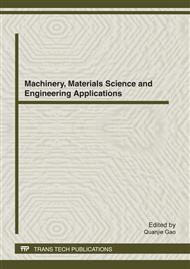p.147
p.154
p.160
p.165
p.170
p.176
p.182
p.191
p.196
Research on the Memory Cutting Model of Shearer
Abstract:
Automatic" and "less people" in fully mechanized working face is the target of China's coal industry development, and the key to achieve this goal is the automation of coal mining. According to the previous technology of memory cutting cannot adapt to the complicated geological condition in China, this paper proposed the technology of shearer self-adaptive memory cutting based on fuzzy control theory, the shearer positioning system and fuzzy control system of self-adaptive cutting. These systems can get the message of shearer's position and attitude at any point, trace the memorial cutting path automatically, judge whether the shearer cuts rocks based on fuzzy control theory and find the optimal scheme when it works. The authors make the experiments of path tracing in laboratory and the experiment of shelf-adaptive adjust in Xi'an Coal Mining Machinery. All the experimental results show that this technology not only can realize the shearer memory cutting, but also can discriminate the abnormal state of shearer cutting rocks, then adjust the drawing speed and drum height automatically.
Info:
Periodical:
Pages:
170-175
Citation:
Online since:
April 2012
Authors:
Keywords:
Price:
Сopyright:
© 2012 Trans Tech Publications Ltd. All Rights Reserved
Share:
Citation:


